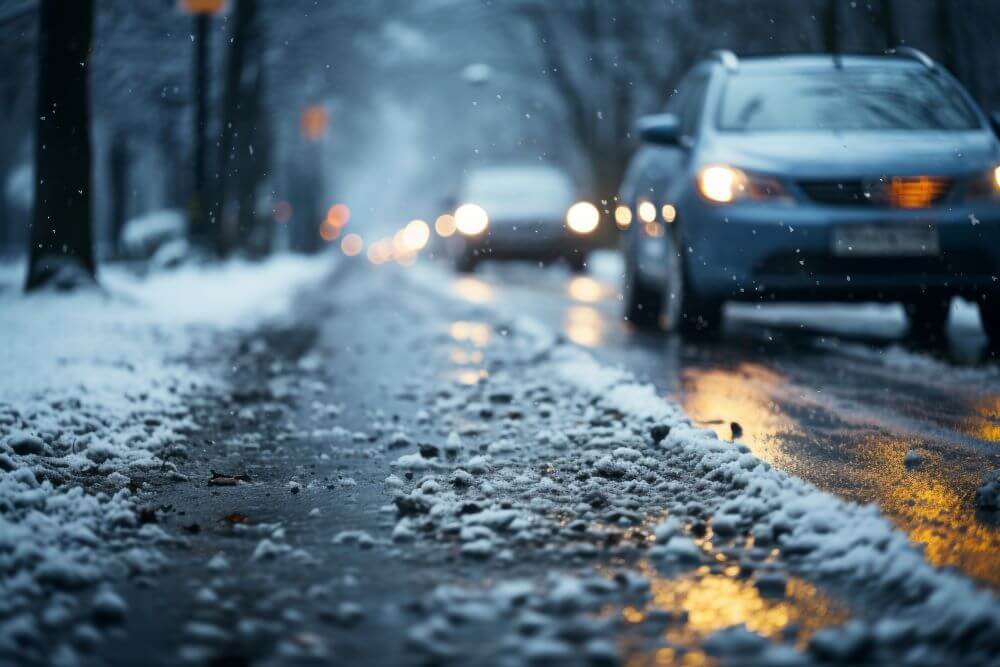Bad Weather Driving: Your Risks & Responsibilities

During the winter season when the weather is bad, the average driver is more likely to be involved in an accident. Accidents typically are the result of driving too fast for conditions or following too close, both of which are violations of our Vehicle Code.
Unsafe Speed and Proper Lane of Travel
Under Pennsylvania law, a person can be guilty of driving a vehicle at an unsafe speed even if he or she is driving under the applicable posted speed limit. Another common traffic violation is failure to maintain the proper lane of travel. Although this violation carries no points, if it is committed by driver in a commercial motor vehicle it will be assigned as a serious traffic offense.
Involved in an Accident
Drivers also need to be aware that the Vehicle Code imposes a duty for any driver involved in a motor vehicle accident to move his or her vehicle out of the travel lane so that it is not obstructing traffic. This duty applies under the following circumstances:
• There is he no one apparently seriously injured or dead;
• The vehicle to be moved does not require towing;
• The vehicle can be moved safely.
There is a caveat to this rule that allows the decision to be made based upon the judgment of the driver. It should be pointed out that compliance with this law does not excuse compliance with the duty to exchange information and/or render aid.
Safe Following Distances
Pennsylvania law mandates that drivers must not follow another vehicle more closely than is reasonable and prudent, considering the speed of the vehicles and the traffic conditions. In bad weather, it’s recommended to increase the following distance to account for longer stopping distances due to slippery roads. Tailgating not only increases the risk of rear-end collisions but also constitutes a traffic violation that can result in fines and points on your driving record.
Use of Headlights
Drivers are required to use their headlights during inclement weather conditions, such as rain, snow, sleet, or fog. Headlights must be used when visibility is reduced to less than 1,000 feet or when windshield wipers are in continuous or intermittent use due to weather conditions. This law helps ensure that your vehicle is visible to others, reducing the risk of accidents. Failure to comply with this requirement can result in a citation and fines.
Winter Tire Requirements
While Pennsylvania does not mandate the use of snow tires, it strongly recommends their use during winter months for enhanced traction and control. Drivers should also ensure their tires have adequate tread depth to handle slippery conditions. Additionally, carrying tire chains or other traction devices can be beneficial and sometimes required on certain roads during severe winter storms. Using proper tires not only improves your safety but also helps you comply with the general duty to drive safely and avoid accidents.
Navigating Pennsylvania’s roads during winter’s unpredictable weather requires more than just adherence to the law—it demands extra caution. Remember, driving with care not only safeguards you but also contributes to the safety of everyone on the road.
Need Help?
If you need assistance with traffic violations or understanding your rights and responsibilities under Pennsylvania traffic law, contact our experienced Pennsylvania traffic attorney. Our legal team can provide expert advice and representation to help you navigate any legal issues related to traffic offenses.
